Algonquian Bark Canoes
From the Micmac of the Atlantic Coast to the Woods Cree of northern Alberta, the widespread Algonquian-speaking peoples produced bark canoes in many shapes and sizes. Some of the most obvious formal differences can be seen in the end profiles, which vary in both height and degree of curvature. The bark cover of Algonquian canoes is more or less completely lined with very thin, wide "splints" of wood sheathing.
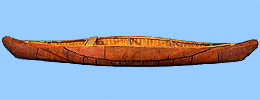 |
Micmac canoe of the large "open water" variety, fitted for sailing
Main builders: René Martin and M. Ketemer
Restigouche, Quebec, 1991
CMC III-F-362 |
Attikamek canoe of the high-ended variety once used extensively in the fur trade and sometimes called "North" canoe
Main builder: Cesar Newashish
Manouane, Quebec, 1971
CMC III-P-21 |
 |
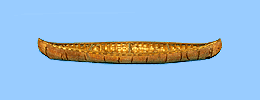 |
Attikamek canoe, small size, suitable for a solitary hunter and his equipment
Main builder: Albert Birote
Dam C on the Manouane River, near Manouane, Quebec, 1966
CMC III-L-228 |
Algonquin hunting canoe
Main builder: Dan Sarazin
Golden Lake, Ontario, 1970
CMC III-L-264 |
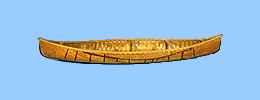 |
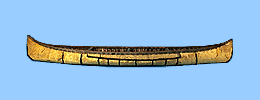 |
Algonquin canoe of suitable size for family transportation
Near Maniwaki, Quebec, ca. 1940
CMC III-L-412 |
Ojibwa canoe of the "long-nose" variety, a name derived from the marked recurve of stem profiles
Wabigoon Lake, near Dryden, Ontario, ca. 1900
CMC III-G-413 |
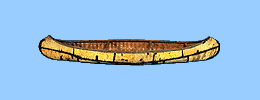 |
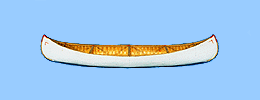 |
Eastern Cree canoe with covering of canvas, readily available and commonly adopted by Native canoe builders in northern Quebec in the early twentieth century
Main builder: John Kawapit
Great Whale River, Quebec, 1978
CMC III-D-686 |








